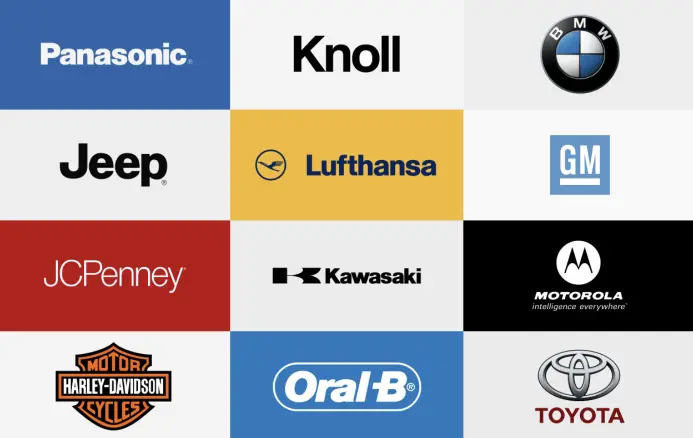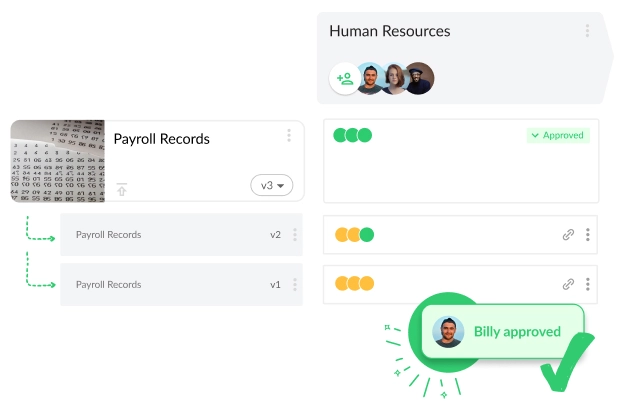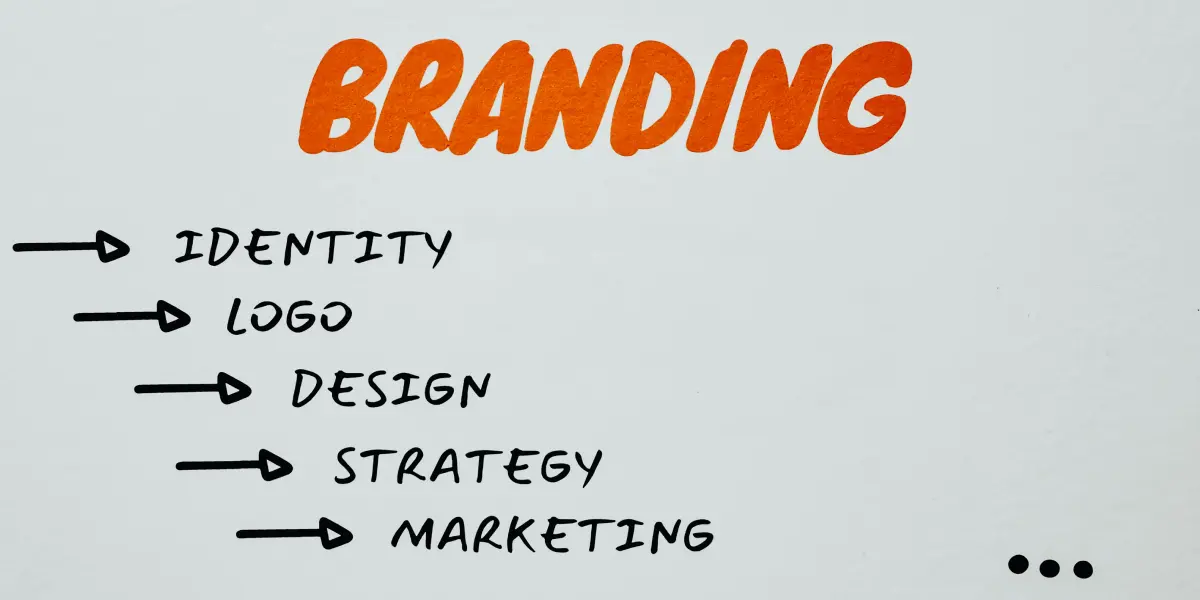People don’t buy into products as much as they buy into brands. In fact, having consistent branding across all platforms has been shown to increase revenue by up to 23%.
But while brand consistency has never been so important, it’s also never been so difficult to maintain. A growing list of consumer touchpoints and the need for more and more content means you need to put some real consideration into how you manage brand consistency these days.
In this article, I’m going to take you through all the things you need to know about building a consistent brand. But first, let’s look at what brand consistency is and how it helps businesses thrive.
What is brand consistency?
Brand consistency is about making sure your brand sounds, looks, and feels the same across every consumer touchpoint. It’s about reinforcing your brand’s core values in everything from products and services through to your daily social posts.
Staying consistent with elements like logos, colors, and tone of voice makes it easier for people to recognize your brand across different channels (and maybe even different parts of the world). But the benefits of brand consistency go way beyond mere recognition.
Supercharge your marketing reviews
Share, review, and approve all your content in one place with Filestage.
Let’s look at why having a consistent brand is so important for business.
Five benefits of brand consistency
While first impressions are important, staying consistent with your brand over time is what builds a loyal customer base that keeps coming back for more.
Here are just a few of the things that make brand consistency important for business.
1. Brand consistency makes you memorable
There’s a reason why most of us use repetition when we need to learn something new.
When we see, hear, or experience something over and over again, it eventually makes its way into our memory. So, it makes sense that if consumers encounter your consistent branding across various channels and touchpoints, there’s a much greater chance that your product or service will be top of mind the next time they want to make a purchase.
2. Brand consistency builds trust and credibility
Imagine if every time you went into your local coffee shop, you were met with a different experience. One day, the drinks are great and the staff are friendly. But the next time you go there, the coffee is cold, the prices have jumped, and your server is rude. You likely wouldn’t have a very good impression of the business. And eventually, you’d look for somewhere more reliable, even if that meant traveling further to get there.
This logic applies to the experiences people have with your brand too. If your brand is unpredictable, you’ll leave consumers feeling confused and questioning your integrity. On the flip side, when customers consistently receive the same level of service, product quality, and messaging from your brand, they’ll develop a sense of confidence in your ability to deliver on your brand promise.
Being trustworthy is key to running a successful brand. And being consistent is the best way to build that trust.
3. Brand consistency boosts brand awareness
The most beloved products in the world (think Coca-Cola, the iPhone, and Starbucks’ coffee) reached and remain at the top largely because of their consistent branding.
When customers recognize, remember, and trust in your brand, it comes as no surprise that this will lead to a steady increase in brand awareness over time. This growth in brand awareness is then further fueled by satisfied customers who share their experiences and promote your products or services to friends and family through word of mouth or social media.
4. Brand consistency sets you apart from the competition
In today’s competitive marketplaces, consistent brand governance can be the thing that gives you an edge over your competitors.
Brand consistency helps make your brand more distinct by establishing yourself as a unique and recognizable identity that instantly stands out on shopping sites and in-store shelves. Familiarity is also comforting and people want to know what they’re paying for. So, if you can give your audience that peace of mind, you’ll be better equipped to win their business every time.
5. Brand consistency increases profits
At the pinnacle of all these benefits of brand consistency is an increase in sales and better bottom line overall. Woop whoop!
There are a few factors that come into play here, so let’s take a closer look at how brand consistency can increase your profit margins.
Increased customer loyalty and retention
When consumers have positive and consistent experiences with your brand, they’re more likely to become loyal customers who return again and again. This repeat business not only boosts revenue, it also reduces the need for more costly marketing efforts to attract new customers down the line.
Higher brand value and equity
Consistent messaging, appearance, and customer experience holds brands to a certain standard and value in the mind of the consumer. Why else would we pay three times more than we need to for a can of Heinz beans?
Yup, if you can establish yourself as a trusted, quality brand, you’ll be in a position to charge premium prices and enjoy a larger profit from every single sale.
Efficiency in marketing and operations
Internally, consistent branding also helps streamline your entire marketing workflow. When your brand has clear brand guidelines and standards that your team can follow, it can cut down the amount of time and resources needed to create marketing materials and execute campaigns. And since time is money, this kind of efficiency can translate into some serious cost savings!
Key considerations for brand consistency
So, you know about all the many marvelous benefits that come with having a consistent brand. But how do you actually create a cohesive brand experience for your audience?
Let’s look at the different components of a consistent brand.
Company values
Brand consistency starts from within your business. Which is why it’s important to define your core values and make sure your team knows what your brand stands for before you start thinking about brand identity elements.
Of course, maintaining brand compliance isn’t a one and done job. After you’ve outlined your mission as a business, you need to incorporate this into the workings of your business by onboarding and training new employees.
When everyone on your team is aware of the bigger picture of your brand, it’s going to be a whole lot easier to create consistent content and customer journeys.
Content workflows
Without a reliable content workflow in place, keeping your brand’s content consistent can feel a lot like herding cats. No matter the project, you need to make sure everyone in the team knows their role, as well as the specific timelines and who they’re collaborating with.
By following a defined process from conception to completion, your creative teams can make sure that all aspects of a project, from design elements to messaging, are aligned with the brand’s identity, values, and guidelines.

Creative workflows also make it much easier for teams to collaborate, communicate, and share feedback with one another and the relevant stakeholders. This collaborative approach acts as a building block for more focused creative work that resonates with the target audience.
Tone of voice
Once you’ve got your brand values and creative workflow down, it’s time to look at the different creative components that come together to make a consistent brand.
Tone of voice refers to the way a brand talks to its audience. This includes everything from style and personality to the different ways you communicate your brand values.
Finding your brand’s voice is crucial for consistency and building strong connections with your consumers. A good place to start is to imagine your brand as a person. How would they connect with your existing and potential customers? What kind of language would they use? What sets them apart from everyone else?
Whether it’s friendly and conversational, professional and authoritative, or playful and whimsical, your brand message and tone of voice should resonate with your audience across every touchpoint.
Typography
Next on the list, we have typography. This refers to the style and appearance of text in your written content and it involves choosing your fonts, font sizes, line spacing, and other typographic elements to convey a message effectively and aesthetically.
When choosing typography for a brand, it’s important to consider things like readability, legibility, and how it aligns with your brand’s overall style and aesthetic.
Consistent typography across all your brand assets, like websites, advertisements, and packaging, will help reinforce brand recognition over time.
Typography isn’t about just choosing a few pretty fonts, it’s a powerful tool that can evoke emotions and determine the way your audience perceives your brand. So, choose wisely!

Brand colors
Brand colors are crucial for consistency, helping to create a unified and cohesive brand identity.
When consumers consistently see the same colors associated with a brand, they develop strong associations between those colors and the brand itself. Like Coca-Cola’s use of red and white, or McDonald’s bold red and yellow.
Of course, you don’t need to be limited to a few primary colors when creating your brand content. But incorporating them into your logos, typography, and visual elements will help create a clean, coordinated look and feel for your brand.
Just like typography, colors can also have emotional associations that influence how people perceive and interact with your brand. So, it’s important to think about your target audience, identity, and even color psychology when picking your brand’s primary color palette.
Brand templates
You’ll be happy to hear that you don’t need to start from scratch every time you create a piece of content for your brand. Instead, you can save your team a whole lot of time and energy by having a series of templates and assets on-hand that you can tweak and customize each time.
You can create templates for everything from your internal presentation decks to social media frames and layouts. This not only streamlines your day-to-day design process, it also makes sure that every piece of content your team makes ties in with your brand guidelines.
Review your brand content with Filestage
When you’re creating content for multiple different platforms and touchpoints, maintaining brand consistency can feel like an overwhelming task. But what if I told you there was a way to make sure all your content was up to scratch without wasting valuable time?
Filestage is a review and approval tool that’s been designed to help teams share, review, and give feedback on files. Because it supports everything from documents and photos to design and video files, it’s the perfect tool to review and manage all your content to make sure it’s in line with your brand brief.
Here are just a few ways that Filestage can help you maintain consistency in your brand.
Seamless collaboration
You can’t create brand consistency without collaboration, and Filestage gives you one centralized platform where all your teams and stakeholders can review and approve your content.
You can invite collaborators to review a project by either sending them an automated email invitation or simply sharing the URL link to the project. They won’t even need to create an account!
Keeping everyone on the same page in this way puts an end to the endless back-and-forth email chains and time-consuming meetings, since you can manage entire projects right there on the platform.

Version control
With Filestage, you can track comments, changes, and past versions of each project, making it much easier to spot any inconsistencies before they get in front of your audience. Phew!
Being able to look back on past projects is also a great way to streamline your workflow moving forward. Every file version is safely secured right there on the platform unless you manually delete it.

Customized workflows
Filestage also helps you maintain brand consistency by letting you create and manage your content workflow with reviewer groups and permissions that you can assign to each project.
When everyone knows their role in the content creation process, it’s much easier to maintain high standards in each project from beginning to end. Plus, when the right people are set up to give feedback at each stage, it hugely reduces the risk of brand consistency slip ups.
Final thoughts
Brand consistency is essential to running a successful business in today’s competitive market.
I hope this article has given you the tools to keep your branding consistent. And if you’d like to see how Filestage can help you review and approve the best on-brand content, start your free trial today.










